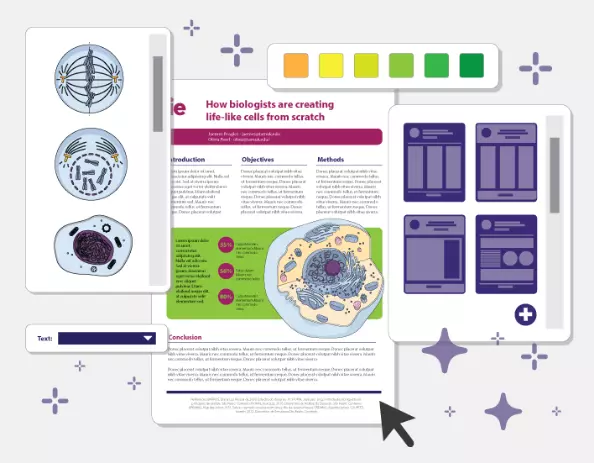Have you ever wondered why some content captivates you instantly, while other pieces barely make sense? In our digital age, where information is abundant and attention spans are limited, the success of your message depends not just on what you say, but on how and where you say it.
This is where strategic publishing comes into play, a perfect blend of art and science that ensures your content doesn’t just reach an audience but resonates with them deeply.
But what exactly is strategic publishing, and how does it transform the way we create and consume content? In this article, we discover the world of strategic publishing, uncovering its importance and the components that make it desirable in this digital world.
What Is Strategic Publishing?
Strategic publishing refers to the carefully planned and executed process of producing and distributing written content, such as books, articles, reports, and online material, to achieve specific goals.
This approach to publishing is not just about creating and sharing content but doing so with a clear purpose and a well-thought-out plan.
The main aim is to ensure that the content reaches the right audience, at the right time, and in the right way, to maximize its impact and effectiveness.
This can be particularly important for businesses, academics, authors, and organizations looking to establish expertise, influence public opinion, or communicate important information.
Importance Of Strategic Publishing In Today’s Digital Age

The importance of strategic publishing in today’s digital age is immense, primarily due to the increase in the usage of digital platforms and the sheer volume of content being produced. Here are some key reasons why strategic publishing is crucial:
Overcoming Information Overload
With the internet flooded with content, it’s easy for any single piece of work to get lost in the noise. Strategic publishing helps in effectively cutting through this clutter to ensure that your content reaches and resonates with your intended audience.
Targeted Audience Reach
Unlike traditional publishing, which often casts a wide net, strategic digital publishing allows for more targeted outreach. By understanding and focusing on a specific audience, content can be tailored to their interests, needs, and online behaviors, increasing engagement and impact.
Enhanced Visibility And SEO
Strategic publishing involves optimizing content for search engines, making it more likely to be found by those looking for related topics. This is essential in the digital age, where search engine rankings can greatly influence the visibility and accessibility of content.
Cost-Effective Marketing
Digital platforms offer more cost-effective ways to publish and promote content compared to traditional media. Strategic publishing leverages these platforms to maximize reach and impact without the need for substantial financial investment.
Immediate And Measurable Feedback
Digital platforms provide immediate feedback through likes, shares, comments, and analytics. This data is invaluable for understanding audience response, refining content strategies, and measuring success against set goals.
Global Reach
Digital publishing breaks geographical barriers, allowing content to reach a global audience. This is particularly important for businesses and creators looking to establish a presence in multiple markets or for educational and informational content that has universal relevance.
Flexibility And Adaptability
The digital landscape is constantly evolving. Strategic publishing involves staying abreast of these changes and adapting content strategies accordingly. This could mean embracing new social media platforms, adjusting to changes in search engine algorithms, or experimenting with different content formats.
Building Authority And Credibility
Regularly publishing high-quality, well-researched, and relevant content can establish individuals or organizations as thought leaders in their field. This is particularly significant in the digital age, where credibility can greatly influence audience trust and engagement.
Strategic publishing in the digital age is not just about segregating information; it’s about doing so thoughtfully and purposefully to ensure that the content stands out, reaches the right audience, and achieves its intended impact in an increasingly crowded and ever-changing digital world.
Related Article: Self Publishing On Amazon: Steps To Publish A Book
Components Of Strategic Publishing
Strategic publishing includes several key components that work together to ensure the effective creation, distribution, and impact of content. These components include:
Goal Setting
Before any content is created, it’s crucial to define what you want to achieve with your publishing efforts. This could be increasing brand awareness, influencing public opinion, educating a specific audience, or generating sales. Clear goals provide direction for all subsequent decisions in the publishing process.
Target Audience Identification
Knowing your audience is critical. This involves understanding who they are, what they are interested in, their reading habits, and the best channels to reach them. This knowledge influences the style, tone, and format of the content.
Content Development
This is the actual creation of content. It involves not just writing but also ensuring that the content is relevant, engaging, and valuable to the target audience. This stage often involves research, writing, editing, and incorporating feedback.
Channel Selection
This refers to choosing the right platforms for distributing your content. Depending on your goals and audience, this might include traditional publishing routes like books and magazines, digital platforms like blogs and social media, or academic journals for scholarly work.
Marketing And Promotion
Simply publishing content is not enough; it needs to be actively promoted to reach its intended audience. This can involve a range of marketing strategies such as social media campaigns, email marketing, PR efforts, and partnerships.
Analytics And Feedback
After the content is published, it’s important to track its performance. This can include analyzing engagement metrics, gathering reader feedback, and assessing whether the content met its initial goals. This feedback loop is crucial for refining future publishing strategies.
Legal And Ethical Considerations
Ensuring that the content complies with relevant laws and ethical standards is crucial. This includes issues like copyright, libel, and ensuring accuracy and fairness.
Financial Management
For commercial publishing, managing the financial aspects like budgeting, pricing, and revenue generation is a key component. This ensures the sustainability of the publishing efforts.
Optimizing For Search Engines
Optimizing content for search engines, often referred to as Search Engine Optimization (SEO), is a critical component of strategic publishing, particularly in the digital world. SEO involves tailoring your content so that it’s more likely to be found and ranked favorably by search engines like Google. This is crucial because higher visibility in search results can lead to more traffic, greater engagement, and ultimately, the achievement of the content’s intended goals.
By effectively managing these components, strategic publishing can significantly enhance the reach and impact of your content, whether you’re an individual creator, a business, or an academic institution.
The Bottom Line
In conclusion, strategic publishing stands as an important approach in the modern world of content creation and distribution, where the overload of information makes it challenging to capture and retain audience attention.
By integrating clear goals, a deep understanding of the target audience, thoughtful content creation, correct choice of distribution channels, and robust marketing strategies, strategic publishing transcends traditional methods, offering a focused and effective means to convey messages to the intended audience.
Whether for businesses seeking to strengthen their brand, academics aiming to understand research, or authors aspiring to reach wider audiences, strategic publishing serves as a beacon, guiding the way towards impactful and meaningful communication in an ever-evolving digital world.
Online Scientific Design Tool For Your Classes, Speeches, Papers, and Much More
Looking for a design tool that can generate compelling visuals for your classes, speeches, papers, and much more? Check out Mind the Graph– an infographic tool that has a collection of scientific illustrations for all your needs. Sign up now – for free!

Subscribe to our newsletter
Exclusive high quality content about effective visual
communication in science.





